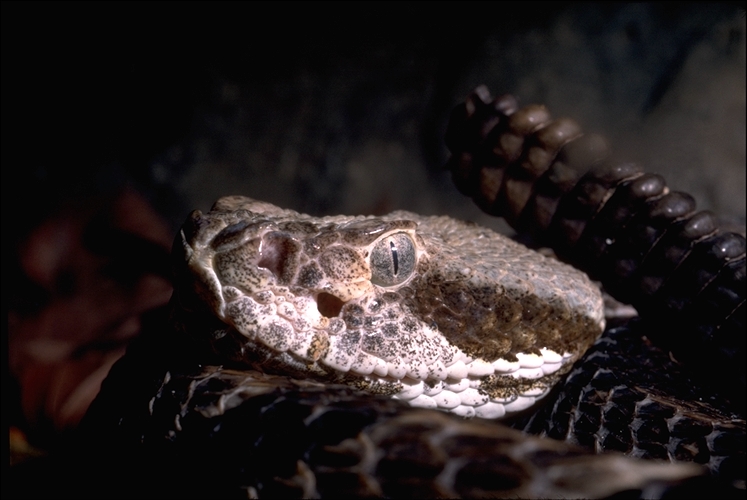Western Rattlesnake
 Rattlesnakes are not as dangerous or as frightening as most people think. They are actually shy and secretive animals that choose to avoid confrontation with people and are seldom seen. That does NOT mean however, that you should not be cautious when hiking, backpacking, hunting or playing in the woods. If you do see one leave it alone because if cornered, it will defend itself.
Rattlesnakes are not as dangerous or as frightening as most people think. They are actually shy and secretive animals that choose to avoid confrontation with people and are seldom seen. That does NOT mean however, that you should not be cautious when hiking, backpacking, hunting or playing in the woods. If you do see one leave it alone because if cornered, it will defend itself.
How most people feel about rattlesnakes is based on the fact that they are not "cute and cuddly." Because they are fierce looking and can bite, and because their warning rattle can startle us, we fear them as a threat and a menace...to be avoided and sometimes killed at all cost.
Rattlesnakes, however, have been on the earth quite a bit longer than humans and serve a very important function in the natural cycle of things. Without them, for example, we just might be overrun with rodents. Eighty percent of a rattlesnake's diet is made up of rodents and in any given year, they might eat as much as 25% of the rodent population in any given area.
If you, or someone you know is bitten, remain calm and get the bite victim to a doctor or hospital as soon as possible. Do not try any of the old remedies like cutting the bite and sucking out the venom, or using a snakebite kit, or using a car battery to run a current through the affected area. Your best bet is a doctor and anti-venom.
If you think you hear a rattlesnake...STAND STILL! Avoid jumping or running blindly. Look carefully until you locate the snake and then make your move. Remember that harmless snakes, moving in dry leaves and grass, can sound like rattlesnakes rattling.
Even "DEAD" rattlesnakes can bite, so...caution is advised. Treat any rattlesnake, dead or alive, with respect.
Each time a rattler sheds it's skin it can add 1 rattle. Because they can shed 2 to 3 times each year, the number of rattles is NOT indicative of age. Rarely are there more than 10 or 12 rattles because the outer ones wear out and break off.

